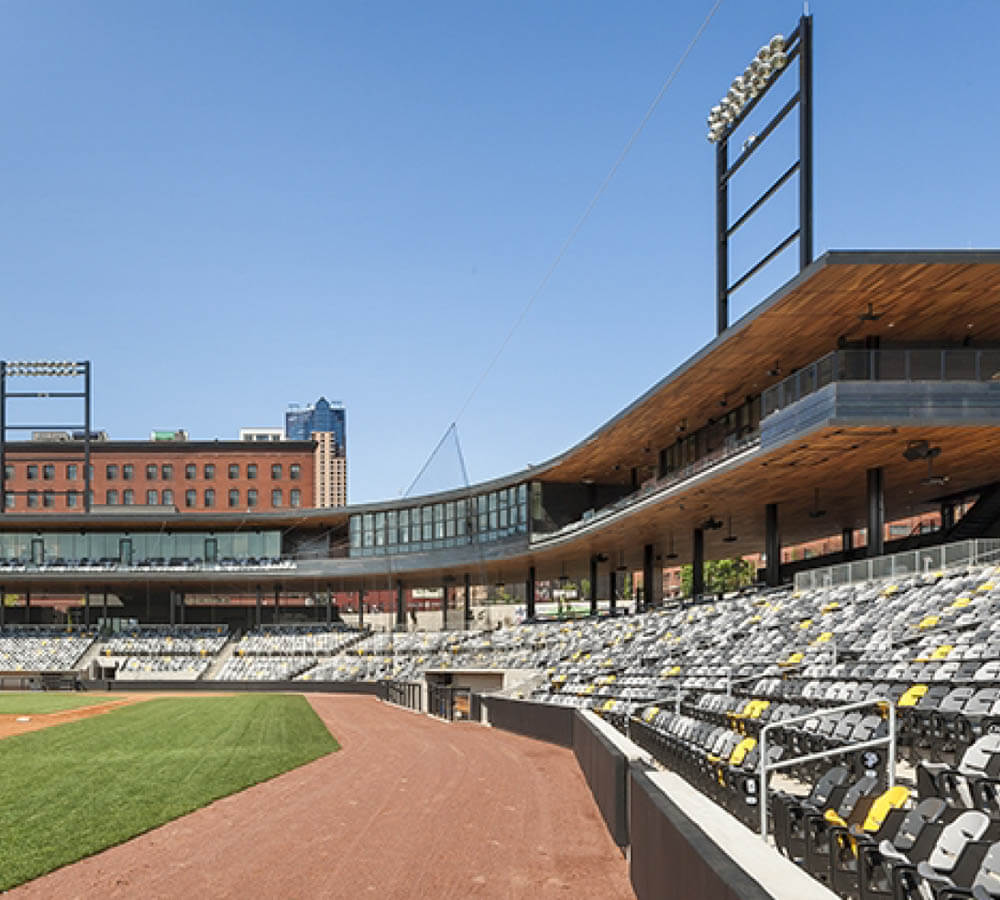CHS Field
Lowertown Ballpark
St. Paul, MN
Creating CHS Field and integrating the St. Paul Saints’ new home into its Lowertown neighborhood required teamwork to overcome budget, site and other constraints. The St. Paul Saints new ballpark incorporates elements of Lowertown’s historic architecture. The playing field and entire seating bowl is located below street level, reducing the overall visual impact of the ballpark in the neighborhood. Precast beams and columns support 75,000 SF of hollowcore plank for the main concourse. Supporting the precast risers are precast raker beams and more columns. Wall panels make up the elevator core, the perimeter wall in the outfield, and the black batter’s eye wall.
The effort paid off, however, with the stadium earning awards for a traditional-meets-modernist design that complements its historic warehouse surroundings, gaining further honors as perhaps the nation’s greenest ballpark and helping the Saints set attendance records.
“The city and the St. Paul Saints were inspiring groups that were dead set on this being a game changer for the ball club, the city and the neighborhood,” said Mike Ryan, president of Ryan A+E, the project’s architect of record. “Most projects don’t have this universal dynamic desire to create something excellent. I have not worked with a team that took that customer passion and neighborhood passion and would accept nothing less than the best results.”
The project took shape through a process that brought together design, construction and engineering firms and their partners, city staff and local interests on the Lowertown Ballpark Design and Construction Committee. About half the stadium’s $64 million budget went to acquire the 10.4-acre site, do underground utility work and clean up what had been among the state’s most contaminated sites, according to Ryan.
Fitting the 7,000-seat stadium into the site and building it next to Interstate 94, city streets, a highway bridge undergoing reconstruction and Metro Transit’s Green Line maintenance and operations center presented challenges including scheduling deliveries. Sustainable features include a 102-kilowatt solar array, and a stormwater recycling system that flushes stadium toilets and helps irrigate the ballfield’s turf.






